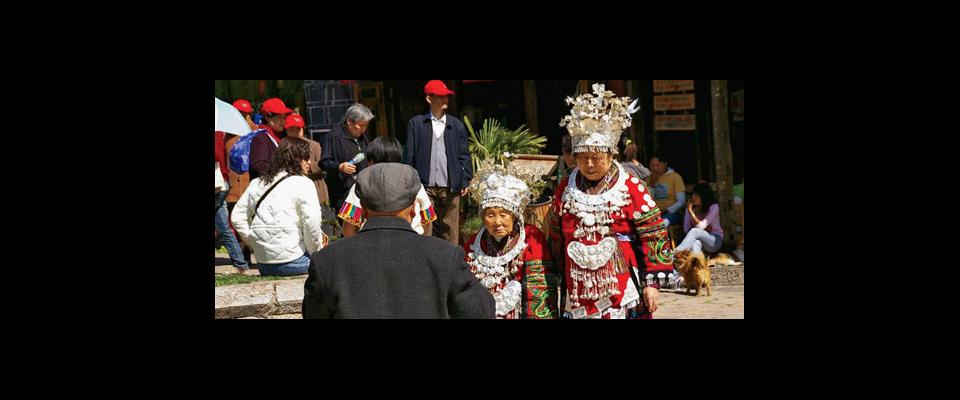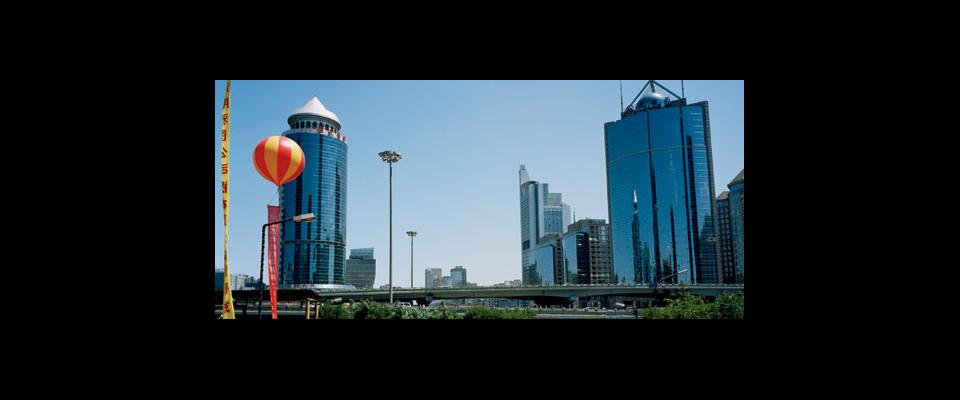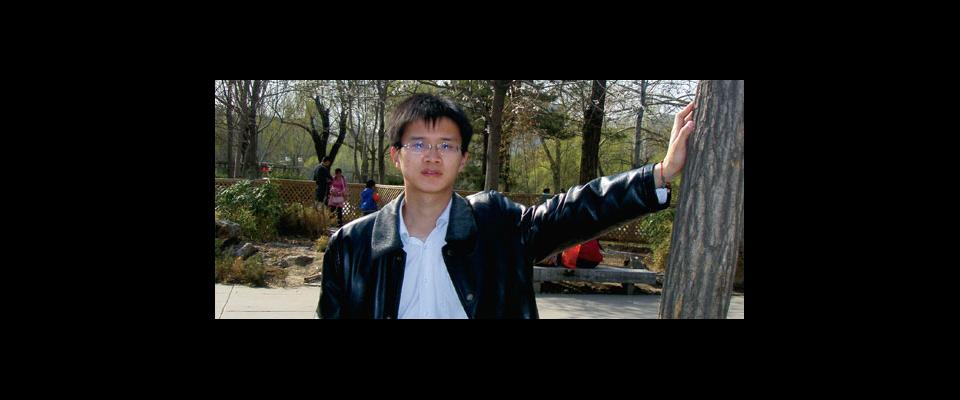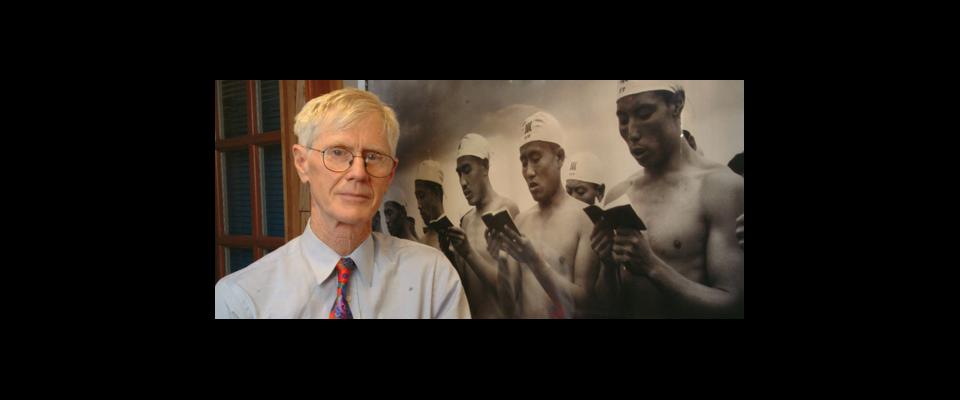Yunnan’s ethnic multiplicity and spectacular setting make it a unique place to experience China’s transformation.
On one of my last days in China, I woke to the sounds of marching feet and singing—loud, staccato, martial in tone. I lay in bed trying to imagine who could be outside my hotel window. Chanting monks? The government had paid handsomely to rebuild the nearby Buddhist monastery, trashed during the Cultural Revolution. Its entrance halls are once again watched over by shiny, 20-foot-tall guardian spirits, intricately painted in primary colors. Officials also renamed the city “Shangri-La” to attract tourists, who visit the restored temple after lining up for photos sitting atop a white yak on a multi-colored saddle. Although formally in China’s southwestern province of Yunnan, the city is culturally Tibetan.
Or perhaps it was a political demonstration? I’d seen little evidence of the old-style revolutionary pageantry, just piles of sad silver Mao buttons in the antique shops. Even the army presence was low-key save for dust-covered olive-drab trucks with red stars that were parked at the ubiquitous construction sites. Huge banners for commercial and housing developments—”Live Grand on Wealth Boulevard!” read one—had replaced political ones.
The hard mountain air felt dry in my mouth. We were at 10,500 feet. I’d adapted well to the thin air, but just in case, there was a bright green plastic bottle of oxygen ($10 per dose) strapped to the wall next to a glass cabinet holding free tea and condoms. I got out of bed, ambled to the window, and looked out. Across the street, men were clearing the ground with shovels and pickaxes for a new project adjacent to a small river. Monks in maroon and saffron robes stopped to talk on the bridge. On the horizon the morning sky layered into shades of gray haze against the sandy high-desert mountains. White tour busses lined up smartly in the parking lot below.
From around the corner, the singers popped into view, marching four abreast, and clad not in olive and red, but in white—starched white. Several wore high French-style chef’s hats. Still not fully awake, it took a few moments to dawn on me that the singing marchers were the hotel’s staff, out for their early morning … what? Like many things I’d seen in Yunnan, the march seemed to combine elements of old China (such as the rows of elders practicing Tai Chi in an ancient city square), the revolutionary China of orchestrated rallies and slogans (now employed for capitalist ends), and the new China eager to adopt certain cultural styles of the once-forbidden West—in this case what could be taken for a corporate team-building exercise.
Such cultural eclecticism is to be expected among people who have absorbed waves of conquering armies and five-year plans, and whose rooftops now sport satellite dishes. But this relatively rural and relatively poor province is also home to roughly half of China’s 56 recognized ethnic minorities, many of whom still speak their ancient languages and hoe their terraced fields in traditional dress. Only 40 years ago, the Cultural Revolution tried to suppress these peasant farmers’ religions and traditions, even as urban intellectuals were sent for “reeducation” among them.
Today, the directions are reversed. Millions leave their villages to find better paying work in the cities, an exodus that poses as great a challenge to ancient traditions as the Red Guards once did. At the same time, tourism has become so lucrative that temples are being repainted and traditional towns restored, or even built from scratch. This switchback history creates interesting anomalies. One musician from Lijiang, a city dominated by the Naxi people, was sent to prison as a rightist (his German nanny had nursed him on Beethoven), but later returned to create a Naxi orchestra, now a must-see attraction. The switchbacks also make this province a unique place to experience the transformation of the world’s most populous land. In Yunnan, cultural time moves at variable speeds, making the region’s history as visibly cross-sectioned as its dramatic geography.
Three weeks before the chef-and-maids march, I’d arrived in Kunming, a 1,500-year-old city of roughly 5 million, with a 30-person tour group organized through two American scientific organizations. Directly adjacent to our hotel were the Thai embassy and a Korean restaurant whose lobby featured a couple dozen tanks of live fish and lobsters (claws tied with ribbon bows) opposite an entire wall shelved with Cordon Bleu cognac. Next to the restaurant, a multistoried, all-purpose entertainment center and disco displayed a large collection of neon signs of various sizes, styles, and languages, advertising a “European Performing Hall,” bowling (with flashing pins), and tennis, among other recreations. That night, young women in mink coats formed an honor guard for guests arriving in black luxury cars. They were greeted at the entrance, which was crowned with a colossal painting of picnicking courtesans in the 18th-century French academic style, by a real woman wearing a gold-buttoned blue waistcoat and white breeches.
From the hotel, I took an evening stroll to an enormous public square also lit up in neon. At one corner, a 40-foot-high European model caressed the side of a fashionable department store. Across the street, the city had planted the main square with thousands of red and yellow flowers, one of Kunming’s principal exports. Several stories above the flowers, a giant painted bull charged across a block-long billboard advertising cigarettes, another major export.
Global travelers have grown accustomed to mixed-culture mega-cities where the latest building style adjoins the last one. But the pace of change in China requires Kunming to decide more quickly than most cities what to keep and what to toss. For tourists, the city has restored a neighborhood of two-story wooden buildings with pagoda-style tile roofs and busy tea and craft shops. On one border is a rare statue of Mao, and on another a park scattered with disarmingly realistic sculptures of People’s Liberation Army soldiers. On the day I visited, a teenager twirled a hula-hoop next to bronze soldiers. All around, high-rise office buildings and banks towered over the neighborhood. Peeking through a wall, I saw bulldozers toppling other old buildings for new construction.
Yunnan comprises a series of plateaus that, as you travel north and west, are separated by steadily higher mountains that become craggier and snowcapped as you near Tibet. Fifty-five million years ago, the Indian subcontinent crashed into southern Asia, giving violent birth to the Tibetan plateau and the Himalayas. The tectonic collision bent the area’s three major rivers, the Yangtze (or Jinsha as it flows through Yunnan), the Salween, and the Mekong, right-angling them into some of the deepest gorges in the world.
From Kunming, we roughly tracked the upstream course of the rivers. As our Chinese bus driver navigated the narrow asphalt roads that incise the curves of Yunnan’s reforested mountains, I learned to avoid peering directly over the edge. In the river-fed plateaus below, brown-roofed villages were tucked into corners of wide plains patchworked with family plots of spring-harvested garlic, wheat, and yellow mustard. Rural men and women of all ages wore traditional straw hats, but young people dressed in Western-style jeans. These farmers harvested vegetables into baskets on their backs, and broke the soil with hoes—hoes that somehow feed China’s millions. I saw only a single tractor during the trip. One woman laid out her wheat harvest on the road so that the weight of passing cars would separate the chaff. Later in the year, the farmers transplant their rice seedlings in neat rows and fill the plots with water carried through time-worn irrigation canals that seesaw down the mountains.
In the small city of Chuxiong, our first stop, our group walked together after dinner to a bustling square where a local troupe performed a fan-and-lantern dance to traditional music played on a boom box. The dance was delightfully horrid. The eight women and four old men, whose overpainted faces gave the act a kitschy drag-queen aura, kept missing their steps, to the obvious consternation of their director. The crowd, heavy with flirting teens, loved it. By contrast, the next night in the gracefully preserved city of Weishan, a polished pop star, with dancing girls and swirling colored lights, rocked the town square. The whole town was out, the fathers perching their toddlers on their shoulders, to see the satiny singer swivel his hips, Michael Jackson–style, and blast breathy love songs from a wall of speakers. Backstage, a few young soldiers assigned to guard duty were instead dallying happily with the receptive young women waiting to go onstage in full ethnic dress.
Maria, a local tour guide, hopped on our bus in Dali. A new high-rise metropolis hugs the southern shore of the lake that, with seven mountain peaks above it, defines Dali. The old gated city has been polished and roadside stone canals have been added because Dali’s main competitor for the local tourist trade, Lijiang, has them. The vast majority of that trade is made up of Han Chinese, who are attracted to Yunnan by the mild climate, clean mountain air, and local ethnic color. “They sing and dance in colorful costumes. Their women are more licentious,” a seasoned American traveler sarcastically remarked to me. (The “licentious” comment likely refers to the Moso people, whose unique family structure is centered on matrilineal homes rather than marriage, drawing considerable anthropological attention. A popular singer, Yang Erche Namu, has also co-written a widely read memoir describing her Moso upbringing, Leaving Mother Lake: A Girlhood at the Edge of the World.)
“I am Bai,” announced Maria, whose real name is Shi Cui Fang. After welcoming us and reciting a few facts and figures about Dali, she worked in some local news that she was exercised about. Teachers had been given a traditional half day off for International Women’s Day on March 8th, but one of the local headmasters had granted his teachers the whole day. That afternoon, some boys returned to the school and accidentally set the surrounding forest on fire. Both the headmaster and the boys’ parents were jailed, which Maria felt was the minimal punishment they deserved.
A few years earlier, she had translated for an international environmental conference held in Dali, and she took the loss of forest to heart. This was only one of the ways, I was to learn, that Maria personally bears the problems of her city, her people, her family, and China. This outwardly cheerful and energetic five-foot-tall, 43-year-old woman turned out to be a ball of anxieties brought on by recent changes. An English teacher at the local university, she is also a member of the Chinese Communist Party, the daughter of a retired PLA officer, and the mother of a teenage girl who likes Marilyn Manson and dreams of living in America.
We spoke one day while walking together along a stone path cut into one of the mountains and reached by ski lift. The old city and lake were spread out below. Maria was born in Dali, but when her father joined the army, the family moved to Beijing, returning when she was 14. She is the oldest daughter, responsible for her younger sisters; when one divorced, their parents blamed Maria. She has had a tense relationship with her stern and distant father, who never speaks of his role in the PLA or during the Cultural Revolution, although it’s “a glory” for the family that he served. She speaks with disarming sincerity of her party membership, as if she were an Eagle Scout who had collected a chest full of merit badges to attain the rank, and now must serve as a moral role model for others. She was adamant that there is no real corruption among party leaders.
Maria dresses most days in black corduroy pants, red athletic shoes, and a red fleece jacket, but worries that she doesn’t wear the traditional Bai dress of her ancestors. If she did, she’d be regarded as an oddball at the university. She also worries that hotel workers do have to wear the traditional dress, for the tourists, because she considers it “too commercial.” Maria worries that she pressures her only daughter to study too much, or not enough, and that the teenager knows little of the Bai language and only a few of the traditional songs. The language is not taught in schools, and has many dialects; Maria and her husband, although both speak it, can’t communicate in Bai.
Maria is happy that China has opened up to the outside world, and is dedicated to her Western students. (Several American students came to pray for her in the hospital last year when she was sick with a life-threatening disease. When she returned to work, she responded by cutting her hair to look “energetic” and take their minds off her illness.) But pointing down the mountain at a new golf course and shiny Buddhist temple built solely for foreign visitors, she was angry at the intrusion. For all of China’s roaring development, a concern about capitalism endures.
Lijiang, just to the north, appears less troubled by the conflicts that plague Maria. Located near the famous Tiger Leaping Gorge on the Yangtze, and having convincingly reconstructed the “old” city after an earthquake, Lijiang’s tourist industry is in full bloom. Evening shopping, the main activity, is shoulder to shoulder. In the museum of the local Dongba culture, a guide hustled us through the main exhibits to a high-priced gift shop, where a revered priest artfully brushed Dongba calligraphy on parchments, which were promptly sold. For me, the race between tourists to have an authentic experience and local industry to craft one reached an apex in Lijiang. But I was happy for my first latte in two weeks served at an Internet café by a sweet-faced waiter sporting tight black pants and punked-out hair. (The most delightful tidbit I was told in China is that gays have appropriated the word “Comrade” to refer to each other.)
Still, there is no shortage of traditional culture, particularly as we climbed to the Tibetan area. Flag-adorned Buddhist stupas and temples punctuated the landscape. Monks openly displayed pictures of the Dalai Lama. Yaks or their cousins, crossbred from cows, worked fields of barley. Family homes were constructed in a handsome style, with plain adobe walls, giant log columns in front, and windows designed in checkerboards of color. Within the walls, Tibetan was spoken.
We were able to visit one family in their home. Pumpkin-sized balls of curing meat hung from the porch, where there were also tidy arrays of scythes, pans, ropes, shoes, scarves, hats, and baskets. Inside, smoke from a copper stove stained the ceiling to a shiny black patina. Next to hand-carved wooden cabinets hung posters with iconography ranging from Buddhist to Maoist to Manchu to department store. A middle-aged woman in traditional dress served butter tea, while her barely teenage niece, in jeans, watched TV ads for push-up bras.
This collage of styles and eras inevitably blurs the lines of native authenticity. Shangri-La, with its earnest early-morning marchers in French toques, shares the culture-borrowing spirit that creates mink-coated honor guards in Kunming. Perhaps this region of mountain trade routes, conquered and re-conquered, was always so. But the modernist-induced contrasts, between multiple ethnic cultures intact for centuries and their reconstitution for tourist display, between poor farmers breaking up clods of red dirt and urban preppies listening to Western pop, have turned contemporary Yunnan into an astonishing and still-evolving anthropological experiment.
From the September October 2007 Green Tech issue of California.





















